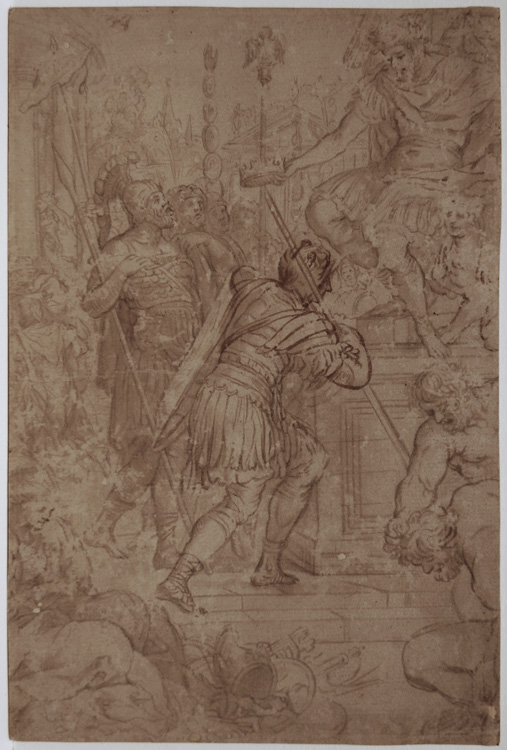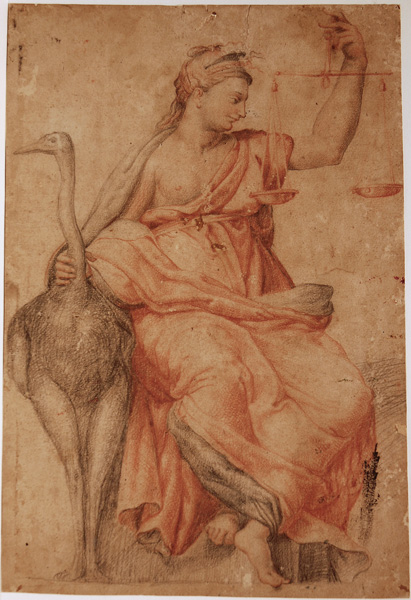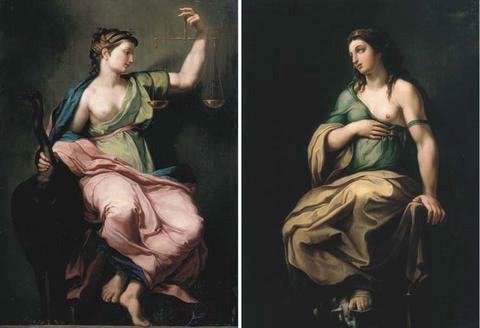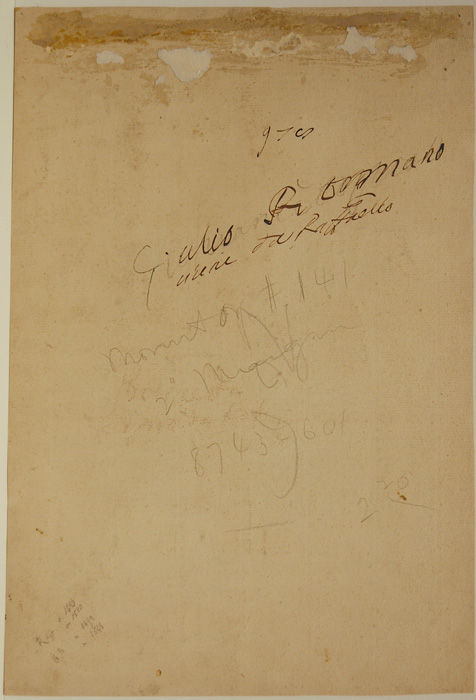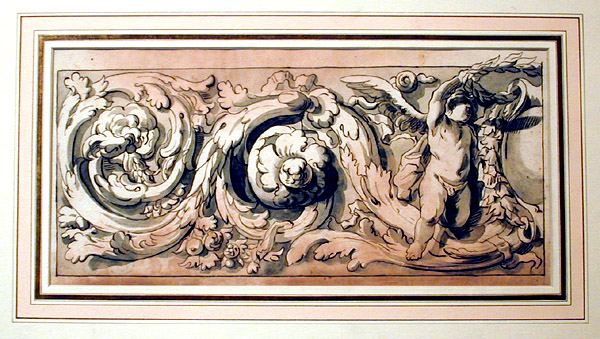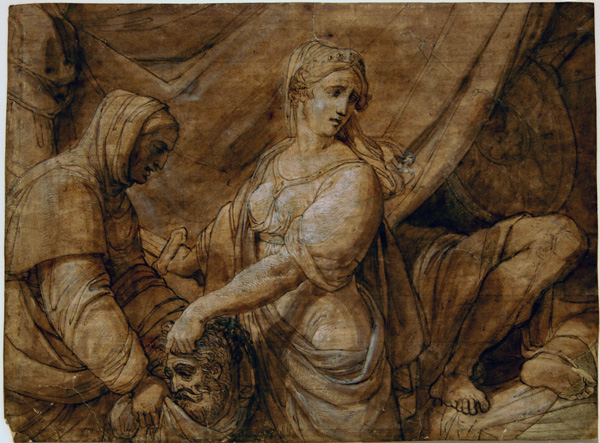|
In The Winter's Tale, Shakespeare, for the first and only time in his career, praises a sixteenth-century artist by name, referring to "that rare Italian master, Julio Romano, who, had he eternity and could put breath into his work, would beguile Nature of her custom, so perfectly he is her ape" (V.ii.91-96), as the creator of a sculpture of the dead Hermione so lifelike that anyone seeing it would expect it to respond to speech with speech: "He so near to Hermione hath done Hermione that they say one would speak to her and stand in hope of an answer" (V.ii.97-99). Giulio Romano, singled out for Shakespeare's priase, was Raphael's chief assistant and succeeded him as the head of Raphael's studio after hisdeath. After the Sack of of Rome, Giulio (assisted by Giovanni Francesco Penni and Perino del Vaga) completed Raphael's unfinished projects, including the Sala di Costantino in the Vatican, and then went to Mantua, where he spent most of the the rest of his life working on projects for the Duke of Mantua, Federico II Gonzaga, most notably the Palazzo del Té, for which he was architect, designer of its program of paintings, and chief painter.
Giorgio Vasari, whose prime loyalty was always to Michelangelo, included a Life of Giulio in Part Three of The Lives of the Artists, published in 1568. In it, he began by praising Giulio as the most accomplished of all of Raphael's pupils: "Among the countless pupils of Raphael, who mostly became excellent, no one imitated him more closely in style, invention, design, and coloring than Giulio Romano, nor was anyone of them more profound, spiritual, fanciful, various, prolific, and universal; he was also an agreeable companion, jovial, affable, gracious and abounding in excellent qualities, so that Raphael loved him as if he had been his son, and employed him on all his principal works" (3: 97). Although Raphael employed him as his chief assistant and had him paint many of the scenes in the Sistine Chapel and the Loggia, Vasari declared that Giulio's drawings were "probably more graceful than . . . [his] painting, for he was always happier expressing his ideas in drawing than in painting, obtaining more vivacity, vigor and expression, possibly because a design is made in an hour in heat, while a painting takes months and years" (3: 99-100). For Vasari, Giulio creates "such various fancies that the mind is bewildered" (3: 101), which is both delightful and a necessary thing since wonder is one of the goals of the artist. Vasari, who visited Giulio ("about the time that Michelangelo uncovered his Last Judgment" [i.e. Fall, 1541, 3: 110]) and admired him, offers him generous praise: "Everything in art came so easy to him, especially design, that no one is known to have done more than he. He was universal and could discuss everything, but especially medals, upon which he spent much time and money" (3: 110). Giulio's interest in medals is of some interest because they typically portrayed a portrait on one face and an allegory of some quality of the subject on the other. According to Janet Cox-Rearick's essay in Giulio Romano Master Designer, Giulio often employed the red chalk that was a specialty of Raphael's either alone or in combination with black chalk, but "once established in Mantua he renounced black chalk and used it only for preliminary indications of compositions to be elaborated in pen. His preferred medium was pen and ink, sometimes combined with brush and wash and often, in the later stages of the preparatory process, heightened in white lead to restore tonal contrasts. The dark brown ink of most of these drawings has faded over time to a soft sepia tone" (19).
Selected Bibliography: Franco Ambrosio, Giulio Romano, trans. Richard Sadlier (Mondadordi, 1991); Thomas P. Campbell, Tapestry in the Renaissance: Art and Magnificence (NY: Metropolitan Museum of Art, 2002); Thomas P. Campbell, ed. Tapestry in the Baroque: Threads of Splendor (NY: Metropolitan Museum of Art, 2007); Janet Cox-Rearick et al, Giulio Romano Master Designer: An Exhibition of Drawings in Celebration of the 500th Anniversary of His Birth (New York: Leubsdorf Art Gallery/Hunter College, 1999); Ernst H. Gombrich et al. Giulio Romano (Milan: Electa, 1989); Frederick Hartt, Giulio Romano (New Haven, Yale UP, 1958); Stefania Massari, ed. Giulio Romano pinxit et delineavit. Opere grafiche autografe di collaborazione e bottega. Mostra di Mantova, Palazzo Té. Collaborazione con l’Istituto Nazionale per la Grafica; Paola Coccia, Maxinella Monarca e Rita Parma Baudille (Roma, 1993); Phillip Pouncey and. J. A. Gere, Italian drawings in the department of prints and drawings in the British Museum. Raphael and his circle: Giulio Romano, G.F. Penni, Perino del Vaga, Giovanni da Udine, Tommaso Vincidor, Polidoro da Caravaggio, Baldassare Peruzzi, Timoteo Viti and Girolamo Genga. Also Sebastiano del Piombo (London, The Trustees of the British Museum, 1962); Sotheby & Co., The Ellesmere Collection Part 2 Drawings By Giulio Romano (London: Sotheby & Co., 1972); Manfredo Tafuri, et al. Giulio Romano (Cambridge : Cambridge University Press, 1998); Giorgio Vasari, Lives of the Painters, Sculptors and Architects, 4 volumes (London: Everyman's Library, 1963; the Life of Giulio is in vol. 3, 97-112).
|
|
|
|
Giulio Romano (Giulio Pippi; Rome 1499-1546 Mantua), after, Design for a frieze. Pen and black ink, heightened with gray wash on cream laid paper, later 16th century. Giulio Romano, Raphael's chief assistant, succeeded him after Raphael's death. After the Sack of of Rome, he completed Raphael's unfinished projects, including the Sala di Costantino in the Vatican, and went to Mantua, where he spent most of the the rest of his life working on projects for the Duke of Mantua, Federico II Gonzaga, most notably the Palazzo del Té, for which he was architect, designer of its program of paintings, and chief painter. As evidenced by the Sotheby's catalogue for the sale of the Ellesmere Collection Part II: Drawings by Giulio Romano and other Sixteenth-Century Masters Collected by Sir Thomas Lawrence London, 1972, many of whose pieces have a provenance that includes King Charles I of England, Giulio did a number of drawings for friezes using images similar to our drawing in the same format as our drawing. See plates 58, 65,72, 75, 76, 78, and 82 for friezes, putti, winged figures, and vegetation similar to those in our drawing. Image size: 165x318mm. Price: SOLD
|
|
|
